| As you drive across Iowa
on I80 and reach the Nebraska border you see the welcome sign as you cross
the Missouri River. | 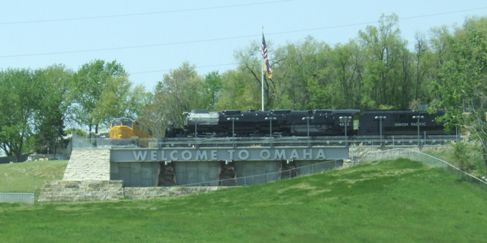 |
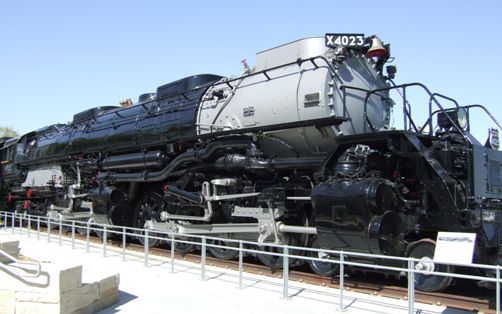 |
Omaha is the home and original eastern starting point for the Union Pacific
Railroad which laid the rails across the Rockies to reach the western
seaboard. This is a 'Big Boy' designed to haul coal over the Wasatch
mountains during World War II. It is the most powerful steam locomotive ever
built, and now the third example we have seen, in different places. |
| At right angles to it on
the same 'Welcome' display is a 6900hp diesel locomotive with four driven
axles on each bogie. Three times the power of most diesel units, it saw
service between 1969 and 1984, during which time it travelled over 2 million
miles. It is the most powerful diesel ever built. | 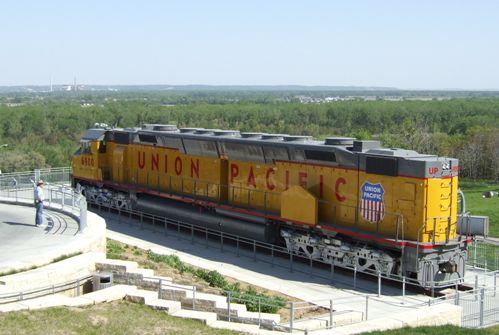 |
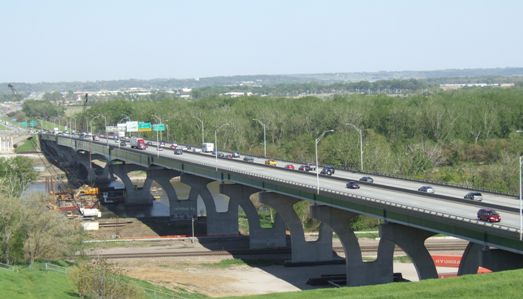 |
And looking down from there you look out at the bridge across the railroad
and the Missouri carrying the I80 eastwards into Iowa, whose flat farmlands
stretch out into the distance. |
| Omaha was a major
junction point of railroads in the mid west and was once one of the busiest
centres in the US. Even today 170 trains a day come through here. Passenger
trains are no longer in operation but once this was the Union Station. The
legend above the door says "No other improvement can equal in utility, the
railroad - Abraham Lincoln 1832. | 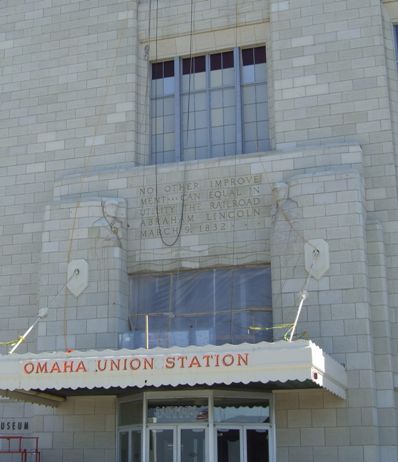 |
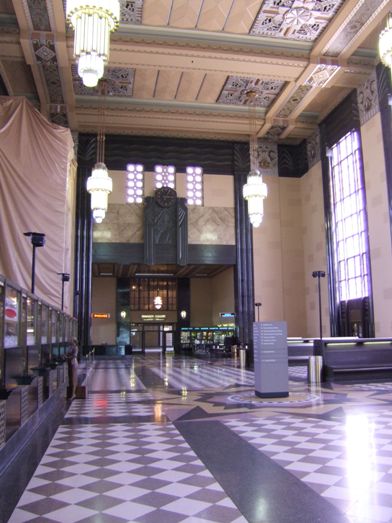 |
Inside this monumental entrance hall the ceilings reach almost up to the skies. It
is one of the grandest buildings we have seen. |
| There are several
interconnected halls with friezes on the walls depicting various pioneer
scenes. | 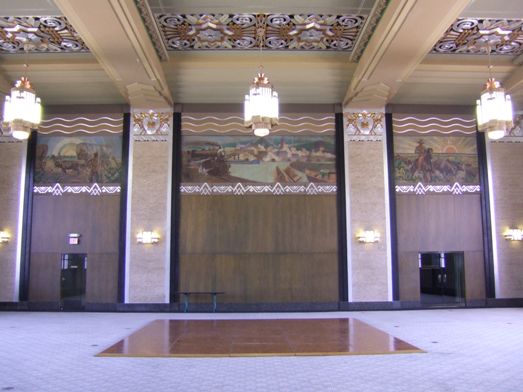 |
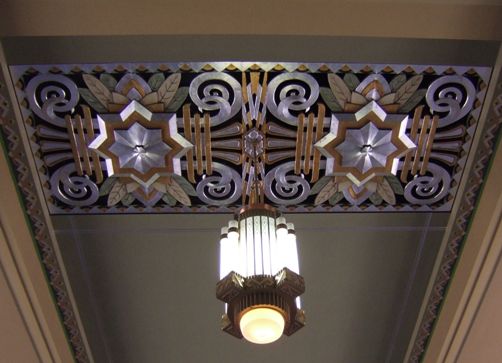 |
And the ceilings have massive chandeliers suspended from ornate designs. |
| All of which are grandly
decorated with intricate patterns and more chandeliers. This building has been
completely renovated and is one of the best examples of classic art deco
architecture in the US. | 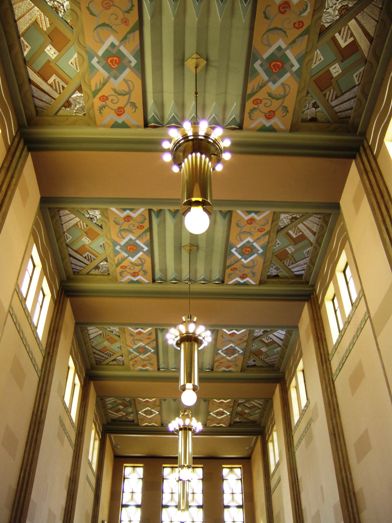 |
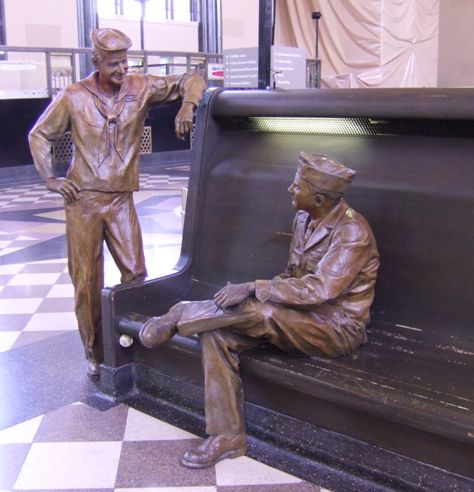 |
The hall has a number of bronze statues depicting figures from around the second world war
era,
nearly all involving service personnel. As you approach them, they start
talking as they might have done almost 70 years ago now. |
| Because, of course, this
is no longer a train station, but the Durham Museum, housed in the former
railroad station since it was given to the city in 1971. The train directory
lists some of the many trains which stopped here in the days when 10,000
people would pass through each day. | 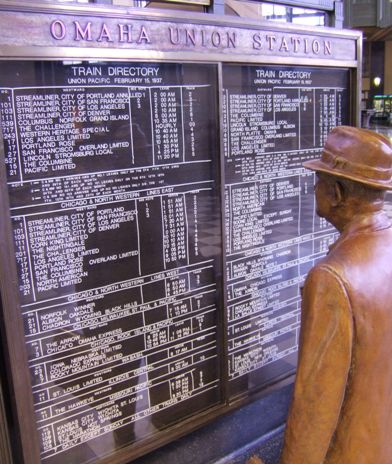 |
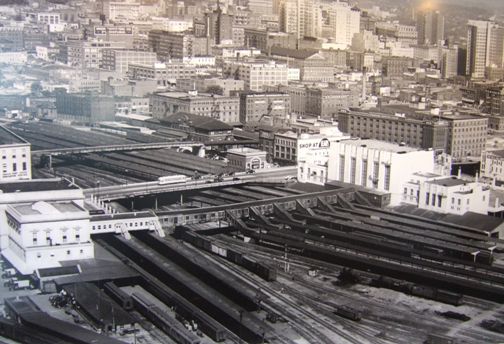 |
The building is the large white one on the right hand side of this picture,
with the bridge spanning the dozens of tracks which once carried all those
trains. |
| Away to one side is the E
H Harriman building. He was once the boss of Union Pacific and is credited
with bring it back from the brink of bankruptcy in the 1920s. Today this is
the command centre for the whole Union Pacific network where trains are
controlled by modern GPS and satellite links. | 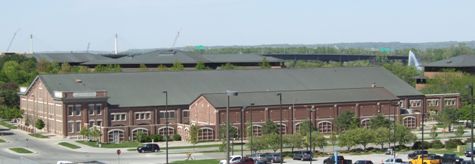 |
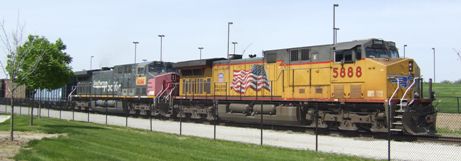 |
A pair of newly arrived AC4400 locomotives which have just backed over 100
100-ton coal hoppers into this complex. The driver then got out and control
of the train was taken over remotely by the plant for unloading. |
| We sat in a riverside
cafe, and nearly got blown away by the wind, as contractors put together
preparations for a pop concert in the evening. I'd never heard of the group
but three 18 wheelers had brought in the equipment so it must be of some
repute. The beer sellers were having a hard time. As fast as they put up
their tents and canopies the wind blew them away and bent the metal frames
beyond use. | 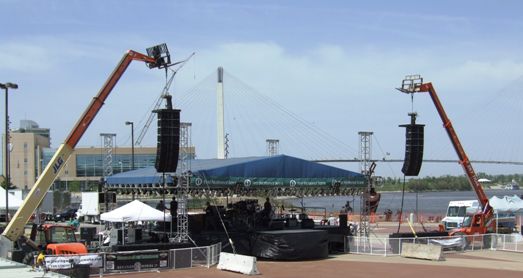 |
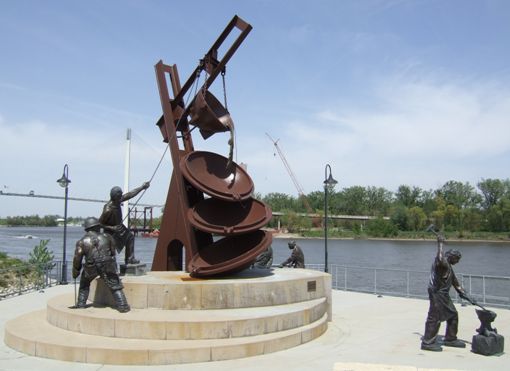 |
We wandered over to this collection of statues commemorating "Labor". The
figures reminded us very much of the statues in Meadowhall commemorating the
steel industry in Sheffield. This is the second largest such monument in the
US and, with its foundations, weighs in at 271 tons. The figures are 8 ft
high. |
|